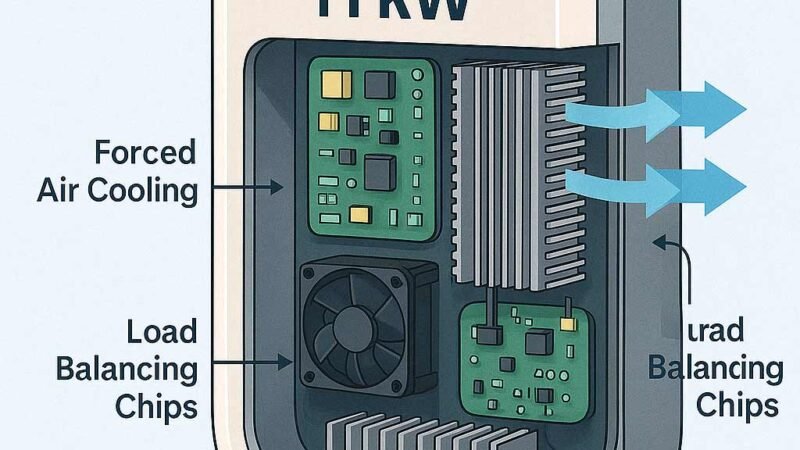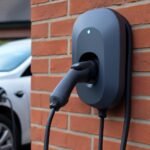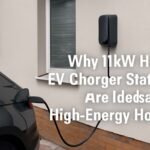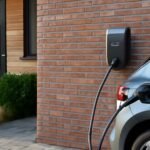When it comes to supplying 11kW AC EV charging stations to wholesale buyers, the features that distinguish a high-quality OEM model from generic alternatives can make or break your procurement decision. This guide delves into the core OEM features you should look for in an 11kW AC EV Charging station, highlighting how each aspect contributes to reliability, user satisfaction, cost-effectiveness, and seamless integration into commercial and residential settings. By understanding these elements, charging station distributors and bulk purchasers can confidently choose a product that meets demanding performance and quality standards.
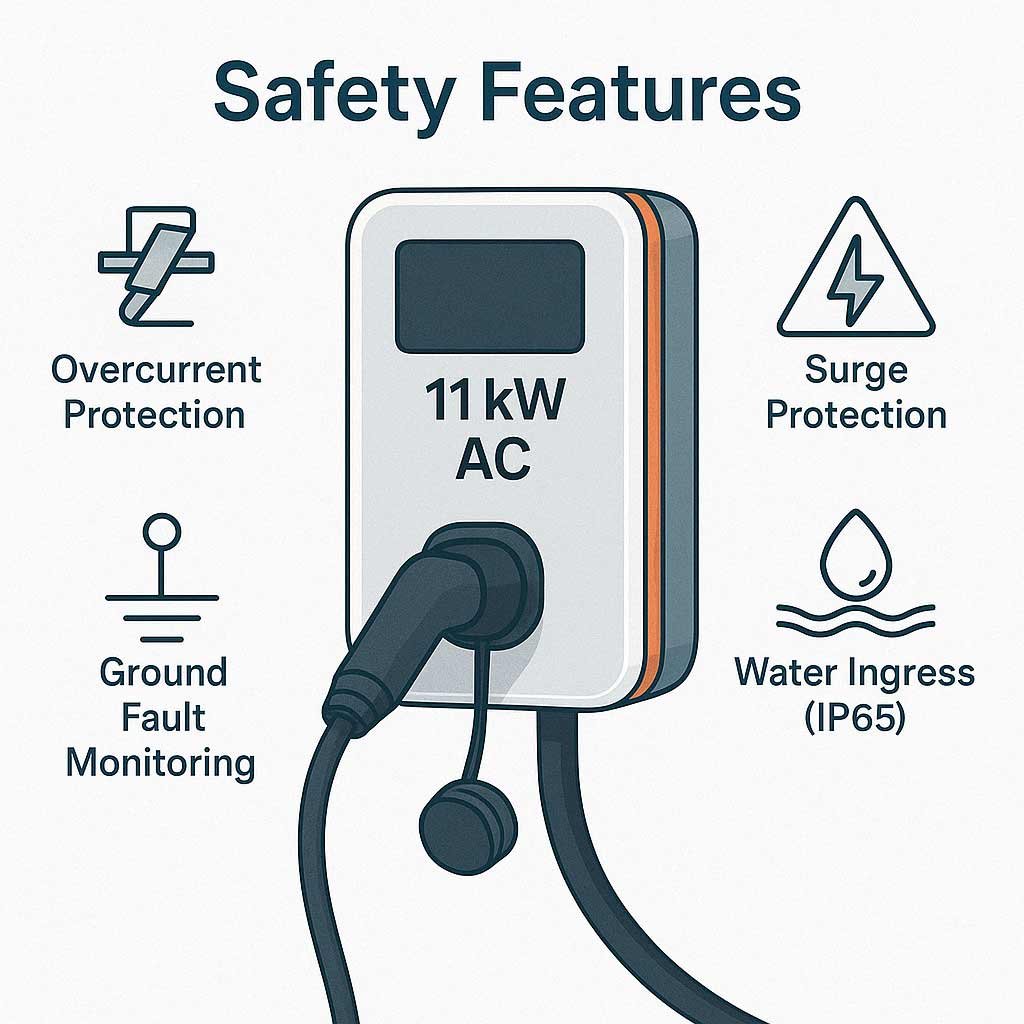
1. Optimized Power Delivery and Efficiency
An OEM 11kW AC EV charging station must deliver its rated power consistently and efficiently. Key considerations include:
- Power Conversion Efficiency: Look for units with over 94% AC-to-DC conversion efficiency. Higher efficiency reduces wasted energy and operating costs.
- Power Factor Correction (PFC): Active PFC ensures voltage stability, minimizes harmonic distortion, and complies with grid regulations, improving long-term reliability.
- Load Balancing Capability: Advanced OEM designs can distribute available current among multiple stations, optimizing usage when several vehicles charge simultaneously.
- Thermal Management: Quality heat sinks and forced-air cooling prevent overheating, essential for continuous 11kW operation under varying ambient temperatures.
These optimizations not only guarantee the full 11kW AC EV charging performance but also extend the unit’s lifespan and reduce maintenance needs.
2. Robust Safety and Protection Systems
Safety is paramount. Leading OEMs integrate multiple protective features to safeguard both the user and the station itself:
- Overcurrent and Overvoltage Protection: Automatic cut-off when current or voltage exceeds safe thresholds.
- Ground Fault Monitoring (GFCI): Continuously monitors leakage currents to ground; triggers an immediate shutdown if anomalies are detected.
- Surge and Lightning Protection: Built-in transient voltage suppressors protect sensitive electronics from voltage spikes caused by lightning or switching surges.
- Temperature Sensors and Alarms: Multiple sensors inside the enclosure track internal heat levels; audible and remote alerts warn of potential failures.
- Ingress Protection Rating (IP65 or Higher): Ensures dust-tight construction and protection against water jets, making it suitable for outdoor installations.
Through these layered safety measures, OEM 11kW AC EV charging stations meet stringent international safety standards and reduce liability risks for distributors and installers.
3. Advanced Communication and Connectivity
Modern charging infrastructure demands real-time communication capabilities. OEM stations typically offer:
- OCPP Compliance: Support for Open Charge Point Protocol (OCPP) 1.6 or higher enables seamless integration with various backend management platforms.
- Ethernet and Wi-Fi Modules: Dual connectivity options ensure flexible installation environments and network redundancy.
- Bluetooth Pairing: Simplifies local diagnostics and firmware updates via smartphone apps for installers and end-users.
- RFID/NFC Authentication: Secure user identification prevents unauthorized usage and simplifies billing and access control.
These features allow wholesalers to market 11kW AC EV charging stations that align with smart grid strategies, fleet management requirements, and user-centric applications.
4. Intuitive User Interface and Ergonomics
A well-designed human–machine interface (HMI) can differentiate an OEM station in the wholesale market:
- High-Resolution Display: A 4–7 inch color touchscreen provides real-time status updates, energy consumption data, and fault notifications.
- Push-Button or Touch Controls: Tactile feedback buttons or capacitive touch panels ensure ease of use, even with gloves.
- Cable Management Solutions: Hooks and retractable reels reduce wear on charging cables and improve site aesthetics.
- LED Status Indicators: Multi-color LEDs show charging states (ready, charging, fault) at a glance, aiding drivers in busy parking environments.
These ergonomic design considerations reduce user frustration and installation time for fleet operators and commercial property managers.
5. Durability and Industrial-Grade Materials
OEM manufacturers invest in premium materials and construction processes to withstand harsh usage:
- Die-Cast Aluminum Enclosures: Provide superior strength and heat dissipation compared to plastic housings.
- UV-Resistant Coating: Protects surfaces from sun damage, crucial for rooftop, parking lot, or roadside installations.
- Anti-Corrosion Treatments: Stainless steel mounting brackets and powder-coated frames resist rust in coastal or humid environments.
- Vandal-Resistant Design: Tamper-proof screws and reinforced cable entry points deter theft and damage.
Durable builds translate into lower maintenance costs and longer service lives—key selling points for bulk purchasers.
6. Compliance with Certifications and Standards
Compliance not only ensures safety but also streamlines market entry:
| Certification | Purpose |
|---|---|
| CE | Mandatory for European Economic Area sales |
| UL 2594 and UL 2231 | North American safety standards for EV supply equipment |
| EN 61851-1 | International standard for conductive charging systems |
| ISO 15118 | Defines vehicle-to-grid (V2G) and secure communication |
| RoHS and REACH | Environmental compliance for hazardous substances |
Wholesalers should verify that the OEM station holds all relevant marks for their target regions to avoid regulatory delays and penalties.
7. Customization and Branding Options
One of the most valuable OEM advantages is the ability to tailor stations for specific clients:
- Logo and Color Matching: Factory painting lines accommodate brand colors (RAL) and custom decals.
- Software Customization: White-label interfaces, custom startup screens, and proprietary communication protocols.
- Feature Bundles: Optional add-ons like smart meters, solar integration modules, or payment terminals can be factory-installed.
- Packaging and Documentation: Branded packaging and multilingual manuals enhance the unboxing experience.
These OEM services help distributors differentiate products in competitive markets and build stronger customer loyalty.
8. Installation, Mounting, and Integration Ease
Time is money in commercial projects. OEM stations incorporate features to speed up deployment:
- Pre-Wired Junction Boxes: Simplify on-site wiring and reduce electrician hours.
- Universal Mounting Plates: Compatible with standard pedestals, wall brackets, and floor stands.
- Plug-and-Play Connectors: Waterproof QDs (quick disconnects) for power, network, and telemetry cables.
- Comprehensive Installation Kits: Include anchors, seals, and gaskets to ensure IP ratings are maintained.
Faster installations lower labor costs and enable quicker ROI for parking operators and residential complexes.
9. Real-Time Monitoring and Data Analytics
Data-driven decision-making is becoming essential in EV infrastructure management:
- Energy Usage Tracking: Built-in metering measures kWh delivered, peak demand, and load profiles.
- Remote Diagnostics: Cloud-based dashboards alert operators to faults, uptime statistics, and maintenance schedules.
- Billing Integration: Seamless export of usage records to financial software or payment gateways.
- Predictive Maintenance: AI-based algorithms forecast component failures, reducing downtime.
OEM stations with advanced telemetry capabilities provide valuable insights for large fleets, public networks, and workplace charging schemes.
10. Warranty, Support, and Lifecycle Services
A robust after-sales program is critical for wholesale clients:
- Extended Warranty Options: Standard 2–3 years, with upgrade paths to 5+ years covering parts and labor.
- Local Service Hubs: OEMs with global networks ensure spare parts and technicians are available regionally.
- Training and Documentation: Online courses, technical bulletins, and repair manuals reduce downtime.
- Software Updates: Free over-the-air updates for firmware and security patches.
Comprehensive support minimizes operational disruptions and builds trust between distributors and OEM partners.
11. Cost Efficiency and Return on Investment
For bulk purchasers, total cost of ownership (TCO) matters as much as upfront price:
- Energy Savings: High conversion efficiency can lower electricity bills by 5–10% annually.
- Labor Reduction: Fast-install features cut electrical installation time by 20–30%.
- Maintenance Savings: Predictive diagnostics can reduce unplanned repair costs by 40%.
- Resale and Upgradability: Modular designs allow module swaps instead of full replacements.
Detailed TCO analyses help wholesale buyers justify investments in premium OEM 11kW AC EV Charging solutions.
12. Real-World Case Study: Fleet Operator Implementation
GreenCity Logistics, a medium-sized delivery company, deployed 50 OEM 11kW AC EV Charging stations across three depots. Key outcomes after one year:
- 98.5% Uptime: Advanced remote diagnostics and surge protection minimized downtime.
- 15% Energy Cost Reduction: Optimized PFC and scheduling software shifted charging to off-peak hours.
- 30% Faster Installation: Pre-wired junction boxes reduced on-site labor by two full days per depot.
- Scalable Expansion: Modular add-ons allowed an additional 20 stations to be integrated seamlessly six months later.
The case demonstrates that investing in OEM features yields measurable benefits in uptime, efficiency, and operational flexibility.
Conclusion
Choosing the right 11kW AC EV Charging station from an OEM supplier means evaluating a comprehensive set of features—from power efficiency and safety systems to connectivity, customization, and lifecycle support. Wholesale buyers who prioritize these OEM characteristics secure products that deliver optimal performance, higher user satisfaction, and lower long-term costs. As the EV market continues to expand, aligning with an experienced OEM partner will ensure you stay ahead in reliability, compliance, and innovation. Make your procurement decisions count by focusing on the OEM features outlined in this guide, and position your business to thrive in the competitive EV infrastructure landscape.

